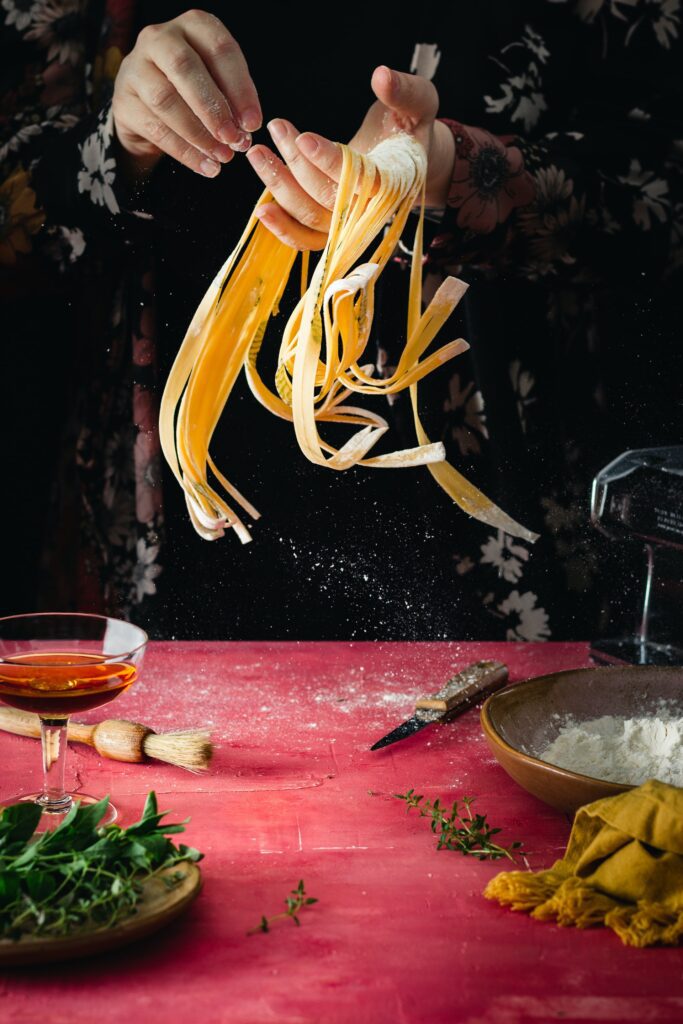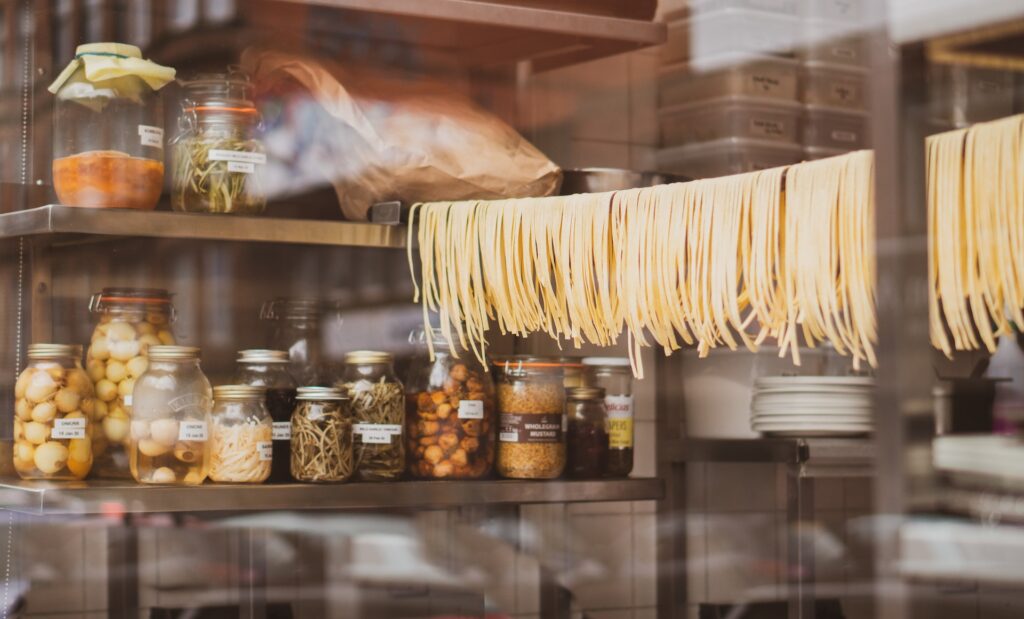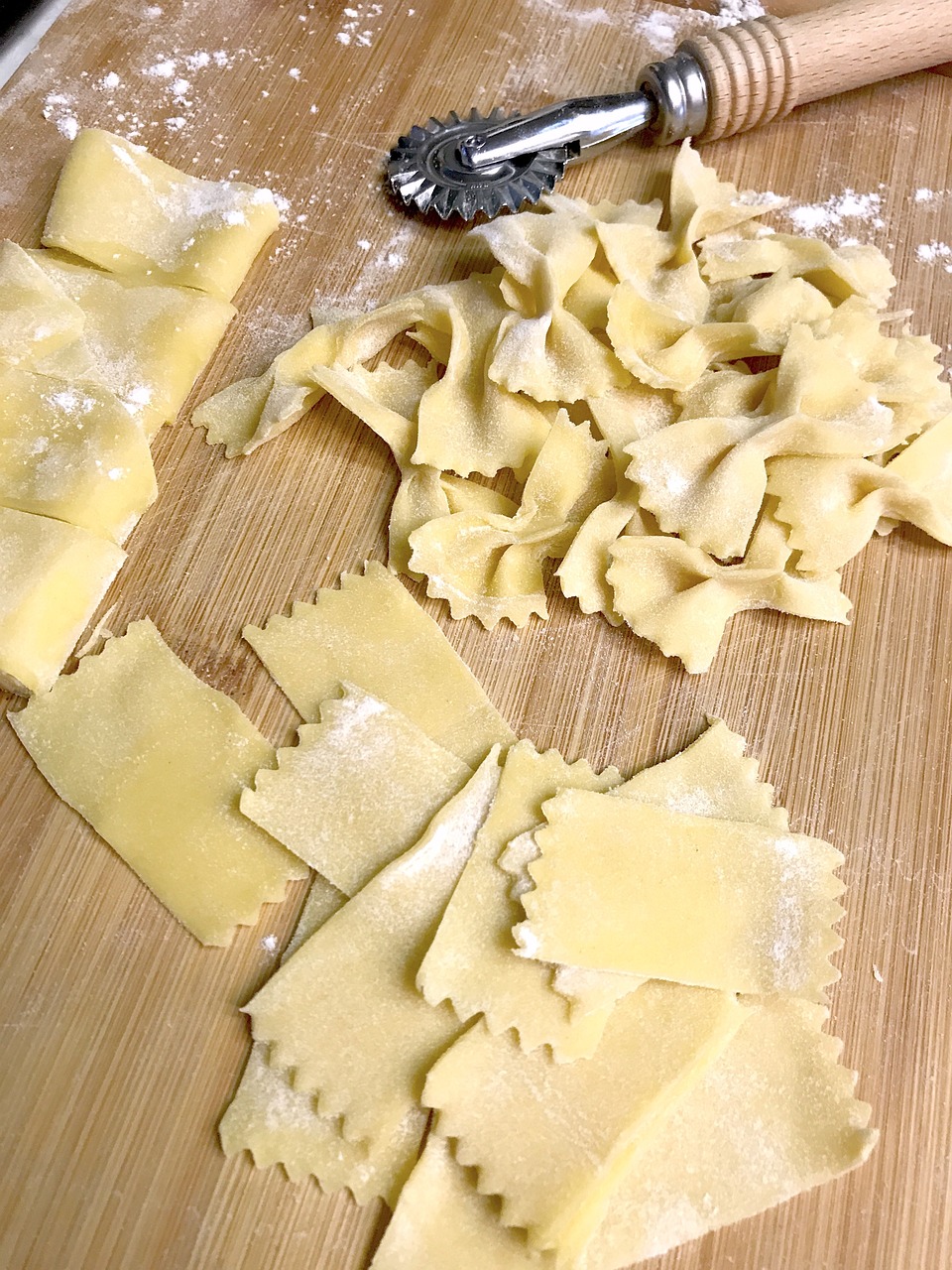Introduction
Making homemade pasta is a rewarding and delicious culinary experience that allows you to create fresh and flavorful pasta right in your own kitchen. While it may seem daunting at first, with the right ingredients, equipment, and techniques, anyone can master the art of making pasta from scratch. In this comprehensive guide, we will take you through each step of the process, from selecting the ingredients to shaping and cooking the perfect homemade pasta. Let’s dive in!
Understanding the Ingredients
Before we begin making pasta, it’s important to familiarize ourselves with the key ingredients:
Flour
All-purpose flour or tipo “00” flour is commonly used for making pasta. The protein content affects the texture, with lower protein levels resulting in a tender pasta and higher protein levels providing a firmer bite.
Eggs
Eggs are an essential ingredient that provides structure, flavor, and richness to the pasta dough. Fresh, organic eggs are recommended for the best results.
Salt
A pinch of salt enhances the flavor of the pasta dough. Use fine sea salt or kosher salt.
Equipment Needed
Having the right equipment makes the pasta-making process easier and more efficient. Here’s what you’ll need:
Mixing Bowls
Large and medium-sized mixing bowls are required for mixing and kneading the dough.
Measuring Cups and Spoons
Accurate measurements are crucial for consistent results, so have measuring cups and spoons on hand.
Cutting Board or Work Surface
A clean and spacious surface is needed for kneading and rolling out the dough.
Rolling Pin
A long, sturdy rolling pin is essential for flattening the dough to the desired thickness.
Pasta Machine
While not necessary, a pasta machine can make the rolling and shaping process more efficient and help achieve consistent thickness.

Making the Pasta Dough
Now let’s dive into the process of making the pasta dough:
Measure the Flour
Start by measuring the desired amount of flour, considering approximately 100 grams per serving.
Create a Well
Pile the flour on a clean work surface or in a large mixing bowl and create a well in the center.
Add Eggs and Salt
Crack the eggs into the well and add a pinch of salt. Using a fork, gently beat the eggs, gradually incorporating the flour from the sides of the well.
Knead the Dough
Once the mixture becomes too thick to stir with a fork, use your hands to knead the dough until it comes together. If the dough feels too dry, add a little water. If it’s too sticky, sprinkle some flour.
Continue Kneading
Knead the dough for about 5-10 minutes until it becomes smooth, elastic, and no longer sticky. This helps develop the gluten in the flour.
Rest the Dough
Wrap the dough tightly in plastic wrap and let it rest at room temperature for at least 30 minutes to relax the gluten and make it easier to roll out.
Rolling and Shaping the Pasta
In this section, we’ll explore different techniques for rolling and shaping the pasta dough:
Hand Rolling
On a lightly floured surface, divide the dough into small portions and flatten one portion with your hands. Roll it out using a rolling pin, working from the center outwards, until the desired thickness is achieved.
Pasta Machine
Set the pasta machine to the widest setting and feed the dough through, folding it in half and repeating several times until the dough is smooth and pliable. Gradually decrease the machine’s setting to roll the dough thinner, stopping at the desired thickness.
Cutting Shapes
Once the dough is rolled out, you can cut it into various pasta shapes. For spaghetti or fettuccine, use a pasta machine with a cutter attachment or a sharp knife. For shapes like ravioli or tortellini, follow specific recipes or use cutters and molds.

Cooking and Serving Homemade Pasta
With the pasta dough prepared, it’s time to cook and serve your homemade pasta:
Boiling the Pasta
Fill a large pot with water and bring it to a rolling boil. Add salt to the water to season the pasta. Carefully add the pasta and cook until al dente, following the recommended cooking times on the recipe or package.
Testing for Doneness
Taste a small piece of pasta to check if it’s cooked to your desired texture. Al dente pasta should be tender but still have a slight firmness.
Draining the Pasta
Once cooked, drain the pasta in a colander, reserving some of the pasta cooking water if needed for the sauce.
Serving Suggestions
Toss the pasta with your favorite sauce, such as marinara, Alfredo, or pesto. Garnish with freshly grated Parmesan cheese, chopped herbs, or a drizzle of olive oil. Serve immediately and enjoy!
See also: Healthy Thai Spiced Salmon Cakes Recipe To Check In 2023
See also: Important Benefits of Drinking Healthy Smoothies
Tips and Variations
To elevate your homemade pasta-making skills, consider the following tips and variations:
Experiment with Flours
Try using different types of flours, such as whole wheat or semolina, for a unique flavor and texture.
Adding Flavor
Incorporate herbs, spices, or vegetable purees into the pasta dough for added flavor and color.
Storing Homemade Pasta
If not cooking immediately, allow the pasta to dry for a couple of hours, then store it in an airtight container in the refrigerator for a day or two or freeze it for longer storage.
Conclusion
Making homemade pasta is a labor of love that results in a fresh, flavorful, and satisfying dish. By following the steps outlined in this comprehensive guide, you’ll be able to create your own pasta from scratch, tailoring it to your preferences and exploring various shapes and flavors. So, put on your apron, dust off your rolling pin, and embark on the delightful journey of making homemade pasta. Buon appetito!



